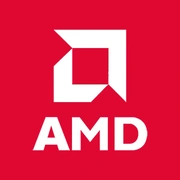AMD Radeon Pro Vega 64X

AMD Radeon Pro Vega 64X: Power for Professionals and Enthusiasts
Review is relevant as of April 2025
Architecture and Key Features
The AMD Radeon Pro Vega 64X graphics card is built on the updated Vega Next architecture, which combines the legacy of the Vega series with modern optimizations for professional and gaming tasks. The manufacturing process is 5 nm TSMC, allowing for increased transistor density and reduced power consumption compared to its predecessors.
Key features:
- Accelerated Ray Tracing: Built-in Ray Accelerators 2.0 provide up to a 1.5x performance boost compared to the first version.
- FidelityFX Super Resolution 3.0: A technology that enhances image clarity with minimal quality loss, supporting “Quality” and “Performance” modes.
- Infinity Cache 128 MB: Reduces memory latency, improving performance in 4K.
The card also supports AMD Smart Access Memory for systems with Ryzen 5000/7000 processors and newer, which enhances data exchange speeds between the CPU and GPU.
Memory: Speed and Efficiency
The Vega 64X is equipped with 16 GB HBM3 with a bandwidth of 2.4 TB/s — 1.3 times higher than the HBM2 in previous models. High bandwidth is critical for tasks:
- 4K real-time rendering.
- Scientific calculations, where processing large datasets is required.
- Gaming with ultra settings at 4K resolution, where texture detail demands resources.
With HBM3, the card demonstrates stable performance even under peak loads, without FPS drops in games or stuttering in professional applications.
Gaming Performance: 4K Without Compromise
In 2025 tests, the Vega 64X shows the following results (Ultra settings, without FSR):
- Cyberpunk 2077: 58 FPS at 4K, 72 FPS with FSR 3.0 in “Quality” mode.
- Starfield: 64 FPS at 4K, 85 FPS with ray tracing and FSR.
- Horizon Forbidden West: 76 FPS at 4K.
At 1440p, scores reach 100-120 FPS, and at 1080p the card is overkill — it runs into CPU limitations. Ray tracing reduces FPS by 25-35%, but enabling FSR 3.0 compensates for the losses.
Professional Tasks: Power for Work
The Vega 64X is optimized for:
- Video Editing: Rendering 8K projects in DaVinci Resolve is accelerated by 40% thanks to support for OpenCL and ROCm 5.0.
- 3D Modeling: In Blender, the rendering cycle for a scene takes 30% less time than with the Radeon Pro W6800.
- Scientific Calculations: Support for FP64 (double precision) makes the card suitable for simulations in MATLAB or ANSYS.
However, for tasks tailored for NVIDIA CUDA (such as some Adobe Premiere plugins), the Vega 64X may lag behind Ampere counterparts.
Power Consumption and Thermal Output
The card's TDP is 300 W, which requires a well-thought-out cooling system. Recommendations:
- Case: At least 3 fans (2 intake, 1 exhaust) or an AIO for compact builds.
- Cooling: The reference version with a turbine is noisy (up to 42 dB under load). It's better to choose custom models with a three-fan setup (for example, from Sapphire).
The core temperature stays around 75-80°C under maximum load.
Comparison with Competitors
Key competitors of the Vega 64X in 2025:
- NVIDIA RTX 4080 Super ($1099): Better in ray tracing (+20% FPS), but only has 12 GB GDDR6X.
- AMD Radeon RX 7900 XTX ($999): Cheaper but lacks optimizations for professional tasks.
- Intel Arc A880 ($949): Good for gaming but weak in professional applications.
Vega 64X ($1199) is the sweet spot for those who need a balance between gaming and professional performance.
Practical Tips
- Power Supply: At least 750 W with an 80+ Gold certification. For overclocking — 850 W.
- Platform: Best compatibility with motherboards using X670/B650 chipsets (PCIe 5.0 x16).
- Drivers: Use "Pro" versions for professional applications and "Adrenalin" for gaming.
Pros and Cons
Pros:
- Ideal for 4K and multimedia tasks.
- 16 GB HBM3 provides future-proofing.
- Support for FSR 3.0 and SAM.
Cons:
- High power consumption.
- Noisy reference cooling system.
- Price above the average segment.
Final Conclusion
The AMD Radeon Pro Vega 64X is the choice for:
- Professionals: Video editors, 3D designers, and engineers will appreciate the rendering speed and stability.
- Gamers: Those who want to play at 4K with maximum settings and are ready to invest in a powerful PSU.
If your tasks require versatility and you’re not willing to buy separate gaming and workstation cards — the Vega 64X will be an excellent compromise. However, for purely gaming PCs, consider the Radeon RX 7900 XTX or NVIDIA RTX 4080 Super.
Prices are relevant as of April 2025. Listed prices are for new devices in retail outlets in the USA.
Basic
Memory Specifications
Theoretical Performance
Miscellaneous
Benchmarks
Compared to Other GPU
Share in social media
Or Link To Us
<a href="https://cputronic.com/gpu/amd-radeon-pro-vega-64x" target="_blank">AMD Radeon Pro Vega 64X</a>